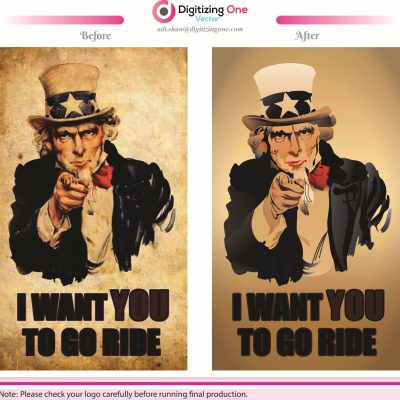What is Vector Art?
Create Excellent Vector Art – Creatives can use vector graphics to create high-quality work of art.
Clean lines and shapes are used to produce vector art, which can be scaled to any size.
The term “vector artwork” refers to artwork that is made up of vector graphics.
Points, lines, curves, and shapes based on mathematical calculations make up these visuals.
There is no loss of quality when scaling a vector image file because it is not low resolution.
As a result, it may be scaled to any size you require.
It’s a fantastic program for putting company logos on business cards, caps, t-shirts and designing posters etc.
How to Create Vector Art?
Sometimes all it takes is one small hint to make everything fall into place.
While some people may consider certain bits of advice to be “common knowledge,” others may not.
That suggestion could be just what they need at the perfect time.
Some helpful tips are discussed below:
Sketching
Your original concept will be captured as a paper sketch (materialize it, if you will).
A loose paper drawing will also aid in the evaluation of proportions and composition.
I like to draw instead of tracing my sketches afterward, gazing at them from time to time.
You’ll have more flexibility to explore with details if you don’t stick to the sketch to the letter.
It also helps to see where the illustration leads.
Break Down the Artwork
To convert a raster image to vector art, break it down into basic shapes first.
The vector artist can create a clear plan of action by breaking down an image into all of its constituent base shapes.
Otherwise, there’s a chance you’ll be taken aback by the image.
Your line of action is determined by splitting an image into base shapes.
This is the planning stage of generating vector art, therefore don’t skip it.
Brushes: How to Use Them Wisely
Brushes are a frequent tool, although they have a restricted usefulness.
If you notice an object that is frequently utilized, consider making a brush for it.
Brushes in vector programs can dramatically reduce the time and effort required to create vector graphics.
Working in Layers
When converting raster to vector, it’s a good idea to work in layers.
Don’t merely layer for the sake of layering. Instead, try utilizing layers in a way that aids in the creation of superior graphics.
Experiment with different layers for backgrounds, characters, and fonts.
It significantly improves your ability and versatility when creating vectors.
You can duplicate a layer and make adjustments without losing sight of the main idea.
Keep an eye out for patterns.
Get into the habit of identifying recurring elements when looking at a bitmap that needs to be vectorized.
There are repeated elements in the majority of the photographs.
It makes your job a lot easier if you can figure them out.
Vectorizing allows you to easily duplicate similar pieces over and over again.
Vector Art Consistency
It’s critical to maintain uniformity throughout a vector.
The focus of the above-mentioned tips has been on breaking down the raster to make vectorizing easier.
The importance of consistency in terms of styles and textures cannot be overstated.
Breaking things down makes the process easier, but it’s still just one graphic in the end.
It’s a single illustration that should turn out fantastically as a whole.
Vector Illustration
The raster picture is vectorized during custom garment printing.
Lines, forms, and curves are now created from the same bit image.
After the process, the two-dimensional raster images become two-dimensional vector artwork.
Create Excellent Vector Art
Vector Conversion takes place in CorelDraw and Adobe Illustrator, two specialized software programs.
Highly competent graphic designers begin tracing each design using them.
They make a note of every pixel in order to convert it to vector art.
The most common vector file formats are Ai, EPS and SVG. When you purchase a file for conversion, the graphic designer may also send you a file in additional formats that you desire.
Vector File Converter
Converting raster files to vector files can be a time-consuming and complex process.
Outsourcing can help you save money while freeing up critical time.
You can use your vector files at any size without losing quality after you receive them.
Since 2008, Digitizing One has been a digitizing and vector art conversion service.
We have a talented team of digitizers and vector artists on staff.
They can transform practically any piece of artwork into a vector file if that is what you require.
Among competitors, our turnaround time is the quickest. Within 2-3 hours, most files are vectorized and returned.
Vector Tracing Service – Raster to Vector Conversion – How to Vectorize an Image
At a reasonable cost, we offer high-quality bitmap to vector conversion services.
We have the capacity to handle large conversion volumes.
The transformations from raster to vector are done by hand. Rather than employing automatic software, to provide greater image quality.
The file size of your vector logo after conversion will be modest.
It implies it’ll be print-ready and good for almost any other application you can think of.
Digitizing One – Vector Service – Vector to Embroidery
Cost to Create Excellent Vector Art – Vector Cheap
Clients from all around the world rely on Digitizing One for faultless vector conversion.
We are not only efficient and dependable, but also incredibly cost-effective.
Our vector conversion services begin at just $10.
We don’t take any breaks. You can reach out to us at any time of day or night.
On weekends and holidays, we are also available.
Visit our website or social media for additional details.
Or contact for stitching on hats & vector company logos.



